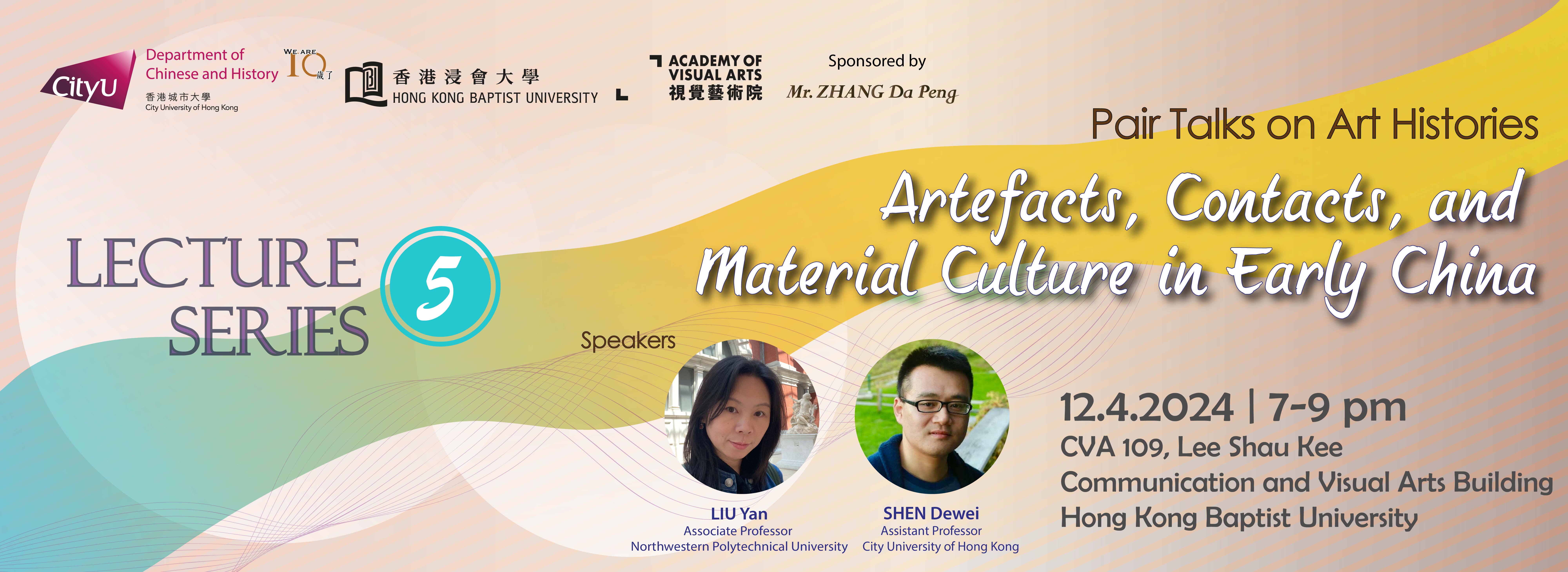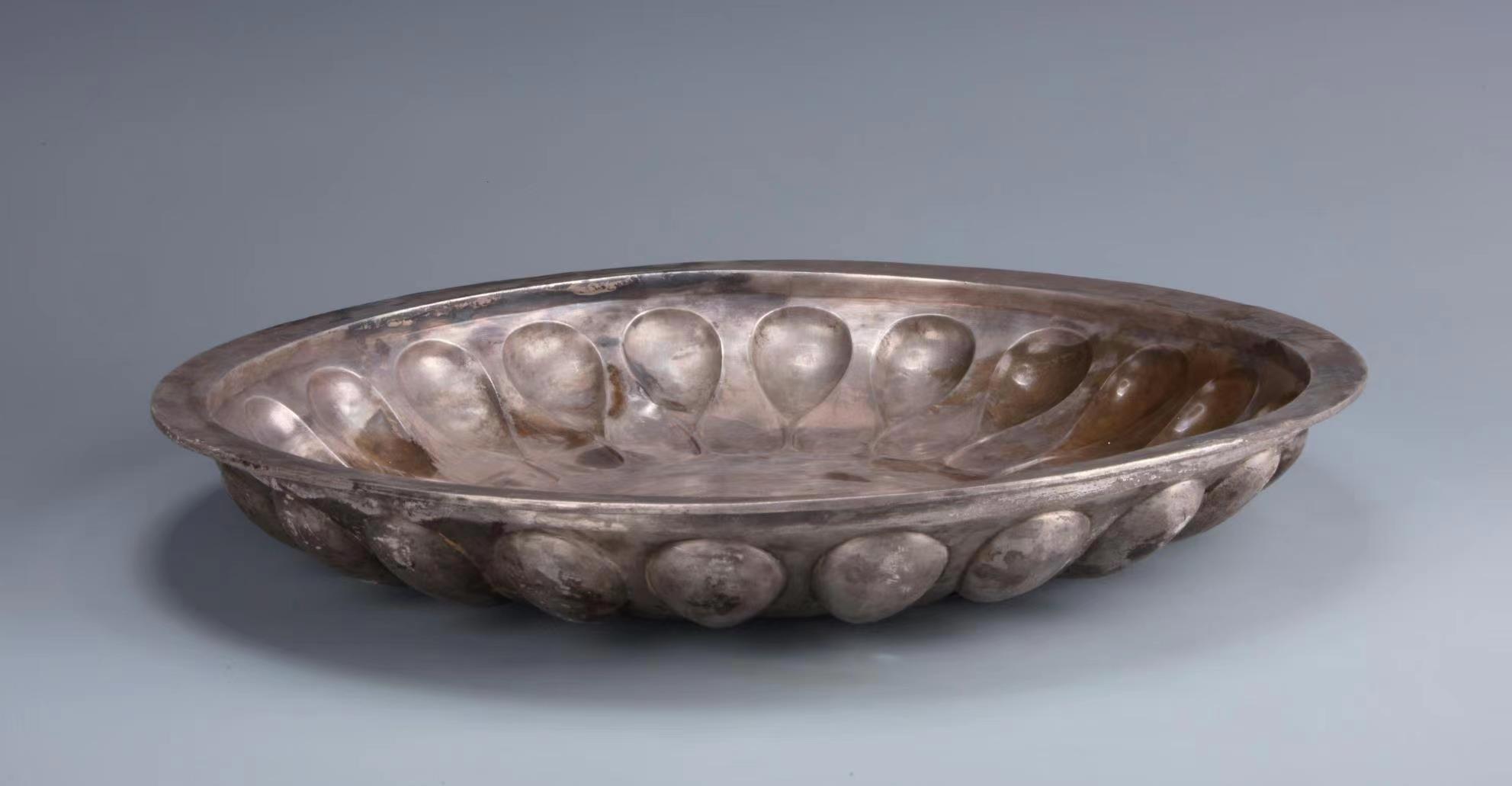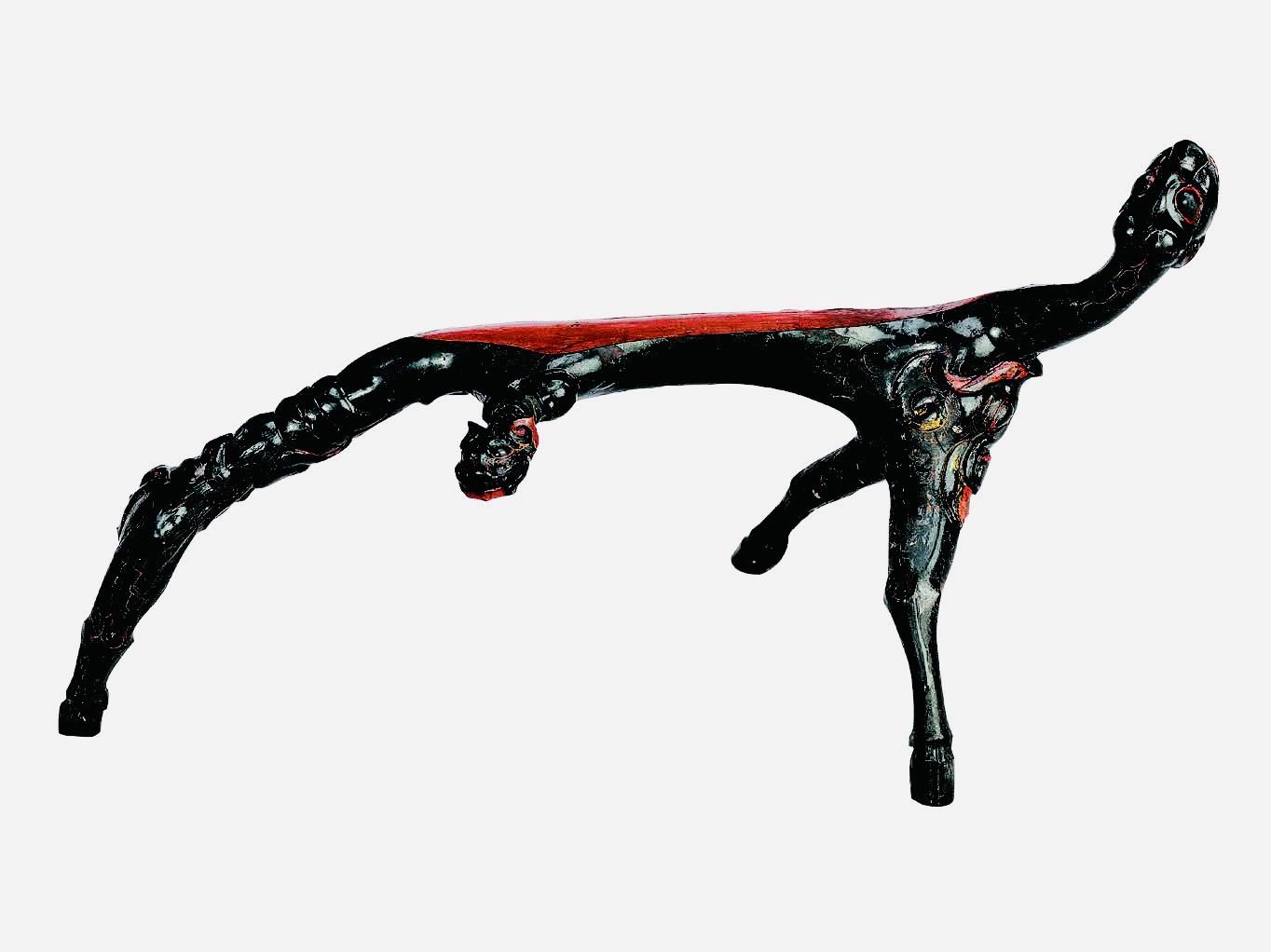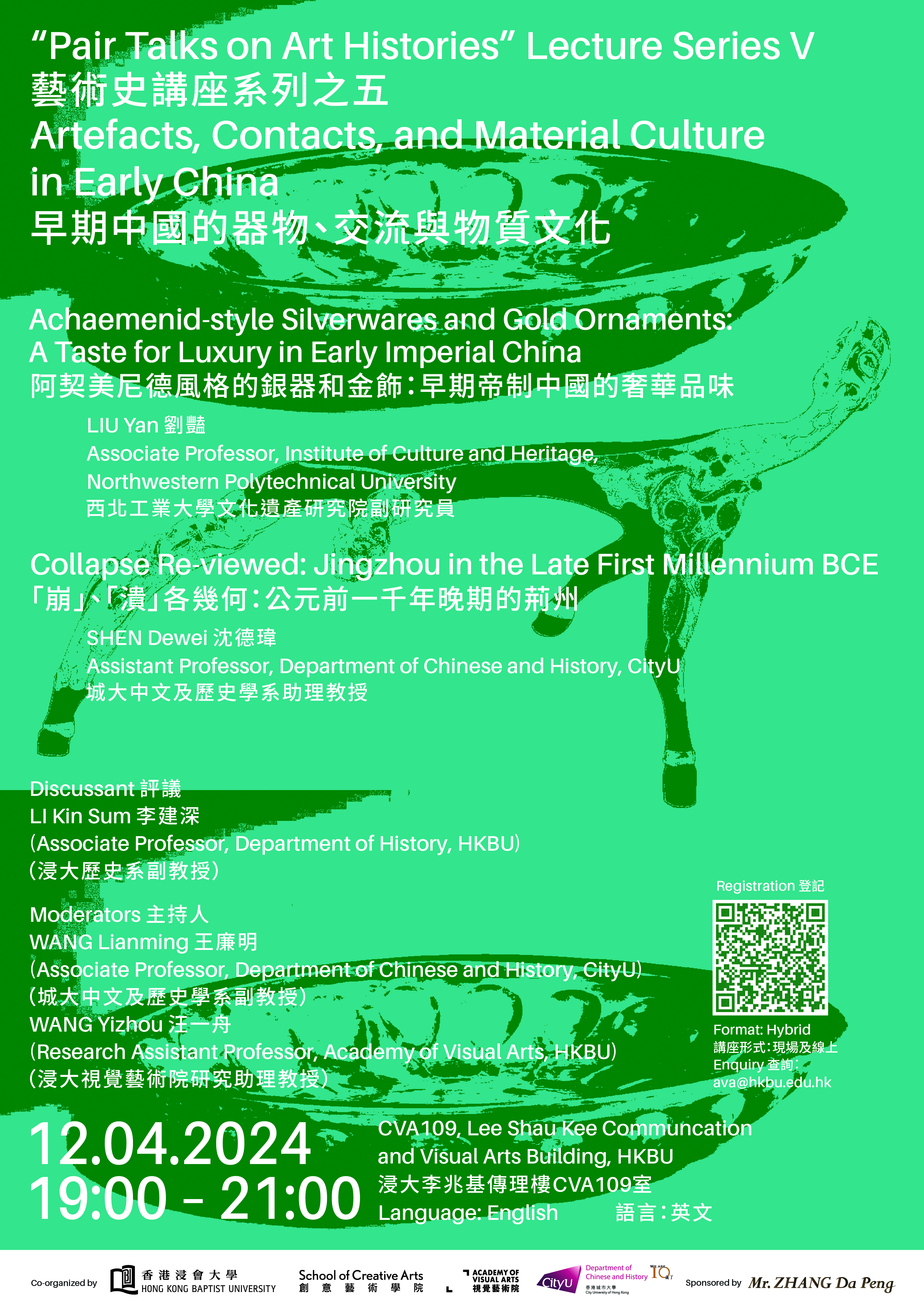
Date: 12 April 2024 (Friday)
Time: 7-9 pm
Format: Hybrid mode (Onsite: CVA109, Lee Shau Kee Communication and Visual Arts Building, Hong Kong Baptist University/ Online via ZOOM)
Language: English
Speakers:
LIU Yan (Associate Professor, Northwestern Polytechnical University, Xi'an)
SHEN Dewei (Assistant Professor, City University of Hong Kong)
Discussant:
LI Kin Sum (Associate Professor, Hong Kong Baptist University)
Moderators:
WANG Lianming (Associate Professor, City University of Hong Kong)
WANG Yizhou (Research Assistant Professor, Hong Kong Baptist University)
Registration
Registration is required for online/onsite participation. Please complete the online registration form
Registration closed
All are welcome!
Lecture Abstracts
Achaemenid-style Silverwares and Gold Ornaments: A Taste for Luxury in Early Imperial China 阿契美尼德風格的銀器和金飾:早期帝制中國的奢華品味 by LIU Yan
The primary hallmark of early imperial Chinese precious metalworking lies in its incorporation of foreign techniques and exotic designs to create intricate royal artworks in both gold and silver. This interdisciplinary exploration brings together the fields of material science, archaeology, and art history to unveil the intricate narrative of early precious metalworking craftsmanship in ancient China. The discussion revolves around the technical features and artistic styles exhibited in Achaemenid-style silverwares and gold ornaments in China, and their possible dating and provenances, aiming to uncover insights into how object-driven material culture studies can illuminate the evolving dynamics of transnational exchanges involving peoples, artefacts, technologies and ideas in the Classical Age of China and its neighbours. The technological study with a focus on a group of early Chinese silverwares and gold ornaments with teardrop designs revealed a fusion of indigenous craftsmanship with foreign inspiration.
Figure 1 Silver plate found in Dayunshan Han tomb (128 BCE) in Xuyi, Jiangsu, photo courtesy of Zebin Li
Speaker Biography
Yan (Fiona) Liu 劉豔, Associate Professor in Chinese Art & Archaeology at the Research Center of Material Science and Archaeology, Institute of Culture and Heritage, Northwestern Polytechnical University in Xi’an. She gained her PhD in Art History at Tsinghua University (2012) and Dphil in Archaeology at Oxford (2015) respectively, and worked as the Christensen Fellow in Chinese Painting at the Ashmolean Museum of Art and Archaeology, University of Oxford prior to NPU. Her main research interests are art and archaeology of early China, excavated texts, interdisciplinary study of prestige gold and lacquers, and cross-cultural interactions across ancient Eurasia. During her fellowship at Columbia, she is working on a new project on artistic exchange and technology transfer in Eurasian antiquity in light of recent archaeological discoveries of early gold in north-west China, with a comparative study of museum collections in the West. This research brings material science into the domains of art historical and archaeological inquires, to examine the interplay between microstructures, ancient technologies and artistic styles of the gold artefacts, providing a new interpretive approach to historical objects with shared crafts and images. It also considers comparative study in specialized craft, religious values, social organization, knowledge communication and long-distance interaction along the networks across north-west China, southern Siberia, Central Asia and far west to the Mediterranean world.
“Collapse” Re-viewed: Jingzhou in the Late First Millennium BCE “崩”、“潰”各幾何:公元前一千年晚期的荊州 by SHEN Dewei
In 278 BCE, the capital region of Chu, located in what is now Jingzhou in Hubei, collapsed due to the conquest by Qin. This event also marked the first textually documented instance of a northern power penetrating this deeply into South China and establishing a permanent foothold near the Yangtze River. The upcoming talk will explore the process of this monumental collapse and its multifaceted consequences, drawing upon settlement and mortuary data collected in Jingzhou over the past fifty years. It seeks to offer insights into what an actual “collapse” might have looked like on the ground—a crucial element that contributes to the narrative of the rise of early empires in late first-millennium BCE China.
Figure 1. A wooden lacquered two-headed mythical beast from Jiuliandun Tomb no. 2, Zaoyang, Hubei.
Speaker Biography
Dewei Shen is an assistant professor in the Department of Chinese and History at the City University of Hong Kong. Before joining CityU, he was a CEAS Postdoctoral Fellow at Stanford University. He received his PhD from Yale University and won the Marston Anderson Prize for Distinguished Dissertation. With a broad research interest in Early China, he has conducted multiple surveys of ancient city sites in the middle Yangtze region and participated in several joint international excavations in North China and Mongolia.


















